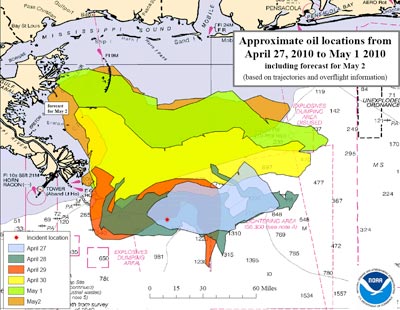A “green” and low-cost approach to battling the worst oil spill the Gulf coast has seen in at least 30 years
An environmental group is organizing collection of human hair from salons and barber shops across the country in an effort to soak up oil spilled in the aftermath of last month’s accident involving the Deepwater Horizon rig, which has been leaking thousands of barrels of oil into the Gulf daily since a deadly explosion on April 20.
Matter of Trust, a California-based organization, is calling for hair donations to stuff hairmats, which will be sent to the Gulf to help clean up beaches and wetlands affected by the massive oil spill. Booms — consisting of nylons filled with hair and feathers — have been shown to safely and effectively soak up oil in past ocean spills.
“We are helping with hair,” Michael Angelo and Anthony Bellapigna, owners of Michael Angelo Hair Studio in Tampa, Florida, said in a statement. “All excess hair clippings from our studio clients are being stored to help aid in disaster relief similar to the current spill that is threatening the Gulf shore line.”
 Deepwater Horizon Trajectory Map. Approximate oil locations from April 27, 2010 to May 1, 2010 including forecast for May 2 based on trajectories and overflight information. From NOAA |
The hair-as-an-oil-absorbent concept was first popularized in 1989 when Phillip McCrory, a Madison, Alabama hairdresser, experimented with human hair as an oil sponge after watching volunteers on TV attempt to clean oil from the fur of sea otters following the Exxon Valdez oil spill. He filled an old pair nylon stockings with five pounds of hair and used them to soak up a mock oil spill he created in his son’s plastic pool. After seeing the results — the water was clear within minutes — McCrory approached NASA scientists at Marshall Space Flight Center in Huntsville, Alabama. The researchers soon began experimenting with hair. In one test, described by Ned Rozell of the Geophysical Institute at the University of Alaska Fairbanks, they filtered filled 40 gallons of water and 15 gallons of oil though nylon bags of hair to find the hair but the oil concentration to just 17 parts of oil per million parts of water or about two drops of oil for the 55-gallon drum.
At the time, McCrory estimated that 1.4 million pounds of hair could have soaked up the 11 million gallons of oil leaked by the Exxon Valdez. He has worked further with NASA to develop new hair-based ways to soak up oil.
Hair and feathers were used as a low-cost oil “absorbent” during a massive spill in the Philippines in 2006. Traditionally, booms, skimmers, chemical dispersants, and biological agents are used methods to clean up ocean oil spills.
The Deepwater Horizon is currently estimated to be leaking 210,000 to 1,000,000 gallons of oil per day into the Gulf, making it the worst oil spill in the region in more than 30 years. Oil started reaching beaches and wetlands on outer islands on Friday, sparking a state of emergency and concerns that the accident could have long-term ecological and economic ramifications for the region, which is heavily reliant on fisheries.







